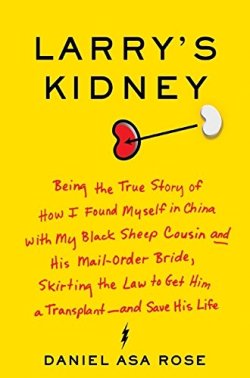
Oddly, when I am scuba diving I think about writing. Long boat rides, open space, and the feeling of being insignificant on the vast ocean plays with the mind. Five or six miles out on the Block Island Sound, the ocean opens up. It is hard to see the shore, and with the typical New England fog, you may not see the shore for hours. Guys chat about their gear, exotic dive sites, and skills they have acquired. I listen and join in, but I think about writing. When we are gearing up to dive, we stop chatting and we get to diving. Gearing up for a dive includes settling into a mental process of checking and rechecking your gear and getting into the water.
Falling into the water is exciting, the waves, the wind, and the noise falls away and you are under the sea. Diving is about the experience, about immersion, looking and seeing. I often think of being a witness to the event, not a participant. You move into different senses. Once, moving over the side of a sunken freighter, I came across a small school of sand sharks circling. I sat on the edge of the ship like a child and watched them slide and move around me. All I wanted to do was be the faithful observer so I could report back. The worse thing to do when you dive is think about diving.
Writing can be like diving, but it is technical in a different way. There comes a time (like diving) when you have all the gear, tools, and training. There comes a time when we don’t need another workshop or process book to inform our writing. Now, you need to slip into the water – listen to your prose. That sounds as foreign as diving into the murky abyss, but it makes sense. One of the most intriguing elements of fiction writing is developing and creating characters and plots that begin to take on a life of their own. That moment when your characters are cast into something new, something surprising – that is the moment when you aren’t creating but are turning that hard work into being a faithful observer, reporting back to the page all that you are seeing.
In the article “When Characters Talk, Writers Listen” by Karen Dionne, she discusses how the creative right brain can be the key to creating without creator interference.
“I’ve always considered myself a highly creative person. But if Kring is right, I’ve been letting my left brain exert too much control — at least in the very early development stage. That’s not to say there isn’t a use for an outline — all three of my published novels were produced working off of one. But there’s a certain magic that happens when we turn off the left brain entirely, if temporarily, and let the right brain take control.”
It probably won’t surprise you that the verbal elements of thinking and speaking are located in the left side of the brain. When I am not writing well, I will stop and say out loud, “This is not going well.” So, it makes sense that I have rich and meaningful experiences when I can’t verbalize my diving, and too, it is critical to the creative process.
Every writer approaches writing with a different spin or preference. I find some of my best writing is by way of writing as exploration and thinking. The sophisticated act of trusting your creativity, your imagination, and your ability is not something that comes right away. Creatively, the act of intuiting the world of a character and what they will do next is power when you bear witness with the reader.
In creating meaningful prose, you are also creating meaningful experiences. It is through our writing tools (character, plot, setting, pace, and so on) that focus our skill set. But there is more. Understanding the importance of a good character is a skill, but knowing when to let that character move into uncharted territory is when we shift from practice to craft. Knowing when to push figurative language forward to accent moments and pull other things apart is not just writing the next chapter, but adding a lyrical beat to the rhythm of the novel. Take the accumulation of all you know and think about writing and let it go. Fall into the current and write. I find the more I let go and trust those skills, the better the writing comes.
Next time you get ready to write, take a deep breath. What will come will come. Trust your instincts and your training. Know your limits, but don’t let them define you. Stop reading and begin writing. The adventure will not be in vain.
When I come back from the sea, I don’t like to talk. I want to hold on to that sharpened sense of awareness and observation. After writing for a few hours, I feel the exact same way. Recompression takes time.


 Yes, I’m here to tell you how unlearning those injunctions may actually improve your creativity; in particular your writing. It certainly did mine, beginning a few years ago in backwoods China, where I was on an extended stay to get my cousin a kidney, something I’ve documented in my new book,
Yes, I’m here to tell you how unlearning those injunctions may actually improve your creativity; in particular your writing. It certainly did mine, beginning a few years ago in backwoods China, where I was on an extended stay to get my cousin a kidney, something I’ve documented in my new book, 



